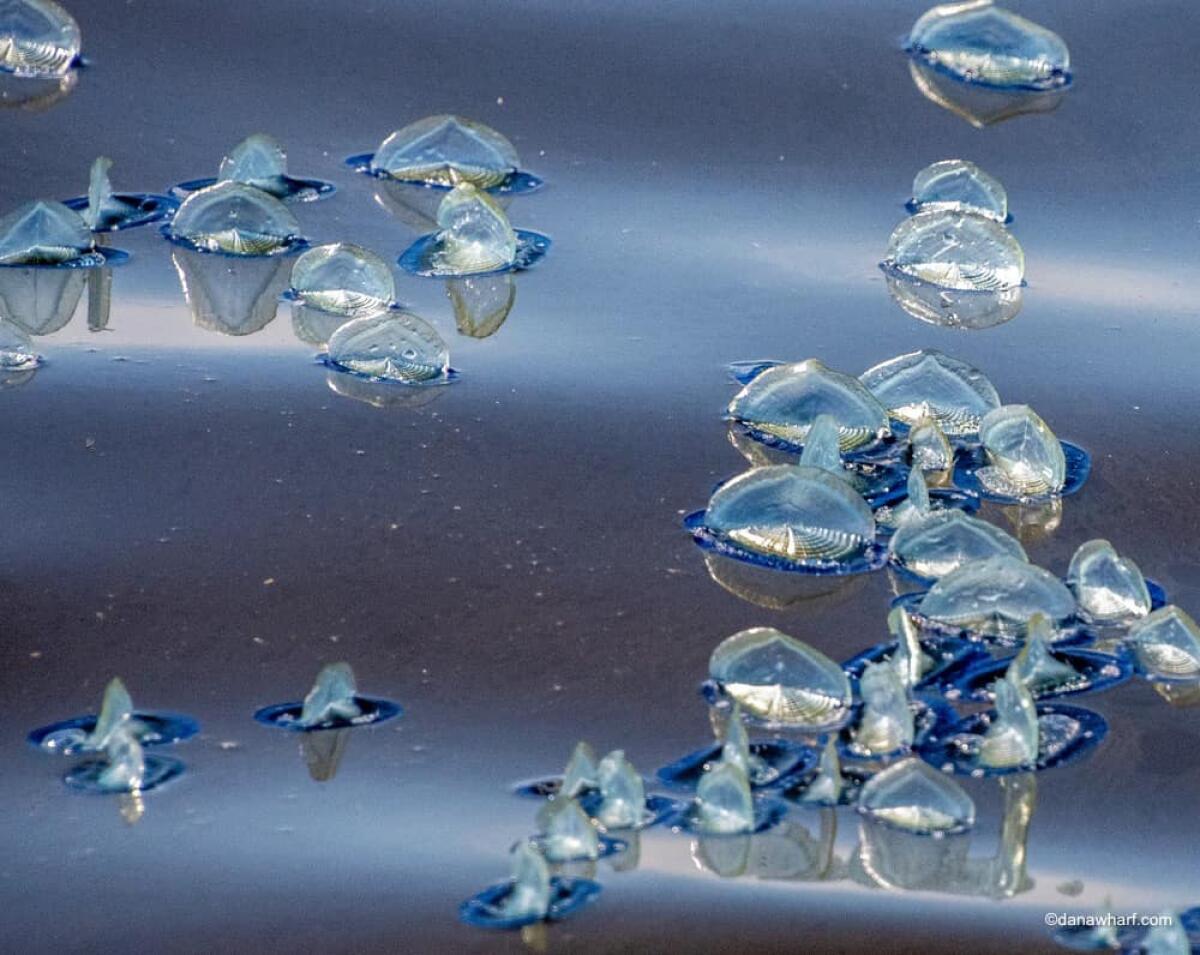What are these blue creatures washing up on Southern California beaches?

Thousands of dark blue creatures have been washing ashore at beaches across the state, littering the shores and bewildering passersby from Marin County to Orange County.
The oval-shaped, flat creatures with tiny blue tentacles may look like little jellyfish but are in fact hydroids called Velella velella, more commonly known as “by-the-wind sailors.”
With a sturdy, transparent sail running across the top of their bodies, the marine creatures travel in large numbers at the top of the open sea, drifting with the help of winds that, most recently, have pushed thousands of them to California beaches.
On Sunday, hundreds of Velella velella surrounded both sides of a boat filled with second-grade whale watchers just off Dana Point on an excursion with Dana Wharf Whale Watching, said Nona Reimer, a former teacher who now works educating travelers with the company.
“We’re seeing hundreds, probably thousands,” she said. “It’s unusual to see them in these numbers.”
On Monday, California State Parks reported the invertebrates have been washing ashore at Crystal Cove in Newport Beach, and the sailing bodies have been spotted as far north as Point Reyes National Seashore, north of San Francisco. They’ve also been spotted in San Clemente, Manhattan Beach and along other Southern California beaches.
Small numbers of the animals will usually wash ashore unnoticed during spring and summer, but Bruno Pernet, professor of biological sciences at Cal State Long Beach, said every few years food conditions will drive their numbers up and winds will push them toward the shore.
“It’s not uncommon, but it happens every few years,” he said.
The small animals are completely at the mercy of wind and ocean currents and food supply, Pernet said, and conditions sometimes bring them along the shores in Northern and Southern California. Warmer waters could help supply them with plenty of food.
Scientist believe the animals may have attained their deep blue color as a sort of camouflage from predators.
By-the-wind sailors are related to jellyfish and the Portuguese man-of-war, which can produce a painful sting, but their tentacles are mostly harmless, Pernet said.
However, officials warn that tolerance can vary from person to person so it may be best not to touch the tentacles if they’re spotted on the sand.
Pernet also points out the animals are known to be either “right- or left-handed” — meaning their sails are oriented either slightly to one direction or the other. They also tend to aggregate within the same group, so there’s a good chance the groups of by-the-wind sailors washing up on shore in recent days are mostly all right- or left-handed.
On a trip Saturday, Reimer, who goes by Nona the Naturalist, noted on Instagram that hundreds of Velella velella were spotted out in the water, drawing in other animals looking to feast on them, and edging closer to shore.
It’s been about four or five years since she last remembered a large number of them so close to shore.
“The water is also full of hundreds of these organisms,” she says in the video posted Saturday, where she is seen holding them by the clear sail. “They do have stinging cells on their tentacles that hang down when they’re hanging on the water, so if you see these on the beach it’s OK to hold them by their sail.”
More to Read
Sign up for Essential California
The most important California stories and recommendations in your inbox every morning.
You may occasionally receive promotional content from the Los Angeles Times.










